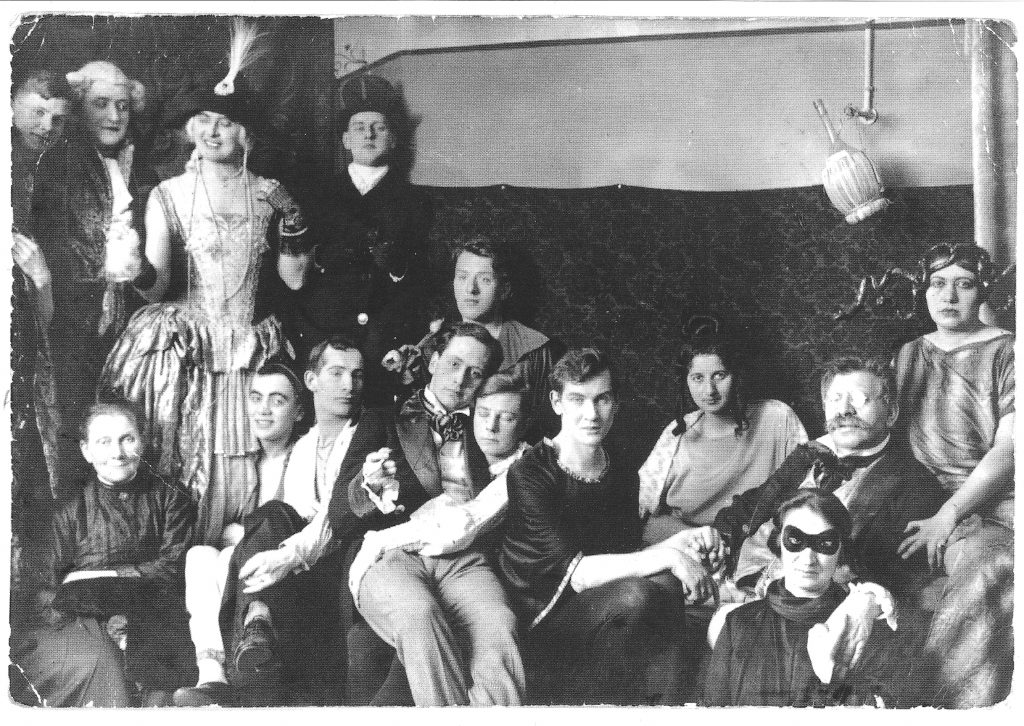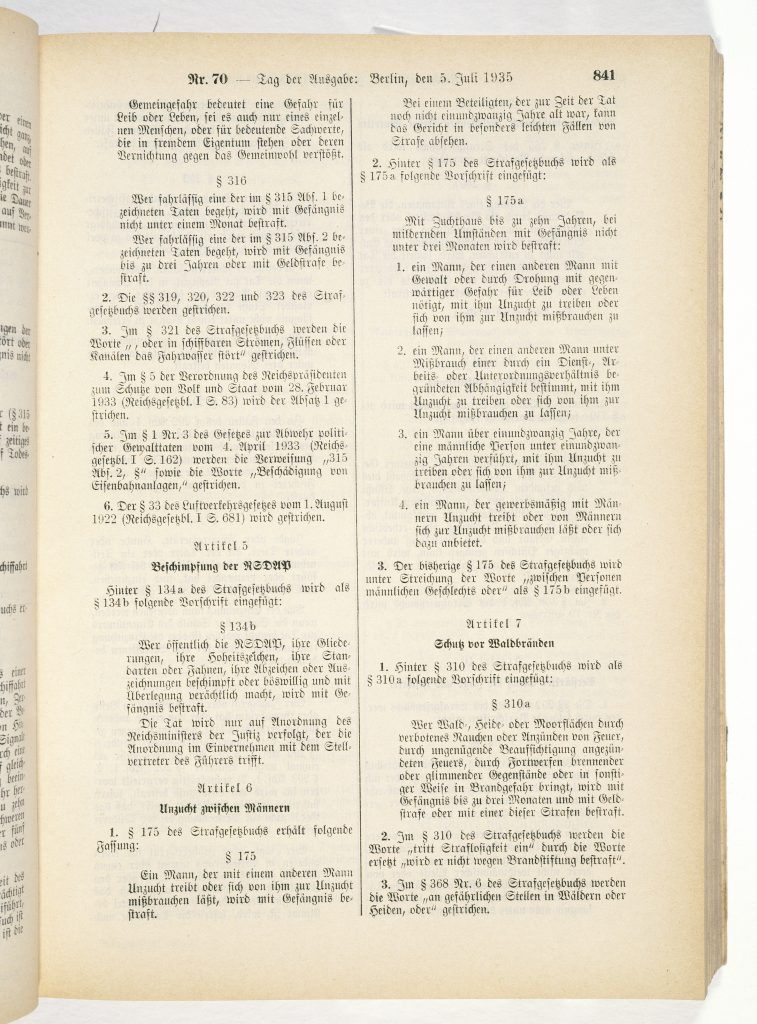Module 2: Gender and Sexuality
2.3 Pre-War, Toward Nazi Persecution
Guest Lecture by Dr. Klaus Mueller
In this clip, Dr. Klaus Mueller invites us to ask, what is Paragraph 175? What do we know about the Nazi persecution of gay men during the Holocaust? And what was the stand of the Nazi regime towards lesbian women? This clip reminds us of the fragility of progress, of minorities within history that are often forgotten or subjugated, and provides us with context for the stories that will be presented in this lecture.

Dr. Magnus Hirschfeld, an internationally renowned sex researcher based in Berlin, was one of the most prominent figures during this period to campaign against the persecution of LGBTQ+ individuals and against Paragraph 175. In 1919, Hirschfeld’s Institut für Sexualwissenschaft/Institute of Sexual Research became operational. The institute offered gender- and sexuality-affirming medical support and surgical intervention, housing professionals from the fields of dermatology, gynecology, psychiatry, endocrinology and, evidently, sexology. The Institute was not only a medical sanctuary but a social sanctuary, as well. He frequently held costume balls, brunches, and gatherings where attendees could perform their identities, uninhibited.
Oral History: Rolf Hirschberg
Oral history interview with Rolf Hirschberg (1996). In this interview, Rolf Hirschberg describes his personal experience as a patient of Dr. Magnus Hirschfeld. Rolf and his lover, Emil, after being implored by Emil’s sister-in-law, visited Hirschfeld to be advised on their homosexuality. Rather than condemn or discourage the two young men as Emil’s sister-in-law anticipated, Hirschfeld met Rolf and Emil with a response that represented his deep commitment to the decriminalization and de-stigmatization of homosexuality.
Following Hitler’s formal appointment as chancellor in 1933, a slew of oppressive changes were made; homosexual bars were closed, Jewish businesses were sanctioned, Dachau Concentration Camp was founded and received its first deportations, Magnus Hirschfeld’s Institute for Sexual Science was destroyed and its collection burned in some of the many book burnings that had begun to take place. In light of this, the homosexual community found a bittersweet sense of safety in Nazi leader, Ernst Roehm; so long as Roehm, a homosexual himself, was permitted in the party and supported by Hitler, many homosexuals felt they had some security. This changed after Roehm’s death during the Night of the Long Knives in 1934, where Roehm and others were “purged” from the Nazi Party by execution. Following these events, a special department to address homosexuality criminally was established, and in June 1935 there was an intense and entrapping revision of Paragraph 175.
Revision of Paragraph 175

In June of 1935, the Nazis revised and expanded the materials in Paragraph 175 to further subjectify the grounds on which one might be persecuted. Paragraph 175 now extended beyond sodomy; one could be arrested for a rumour, a glance, for a look, or a touch. It is important to note that this legislation was expanded with the express intention to incarcerate gay men. While addressing lesbian women was considered, the Nazis ultimately considered lesbians to be malleable; that is, with the right persuasion, these women could be convinced to act accordingly, to marry men and have children and, in doing so, to serve the nation. In this case, lesbian women’s sexuality was not considered threatening; lesbians became dominatable.
Reflection Questions:
- After viewing and reading this content, consider the significance of the revision of Paragraph 175. What was the function of broadening its terms?
- Who was left out of Paragraph 175 and why?
- How is this revision related to the Nazis’ broader ideology regarding sex and gender?

